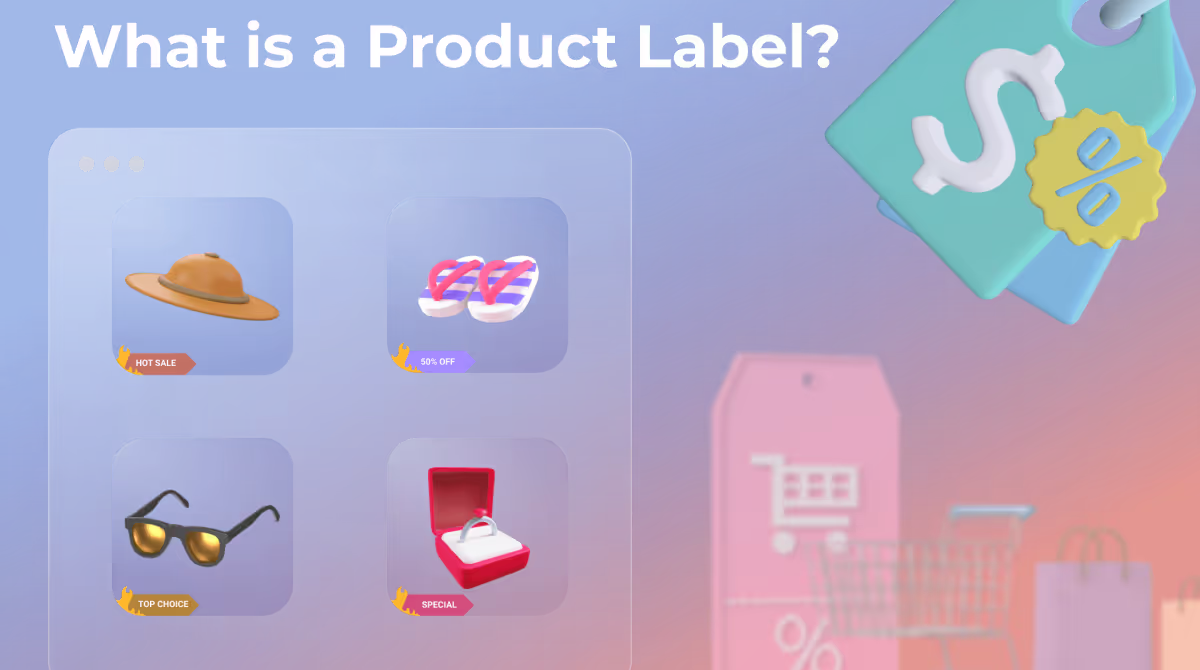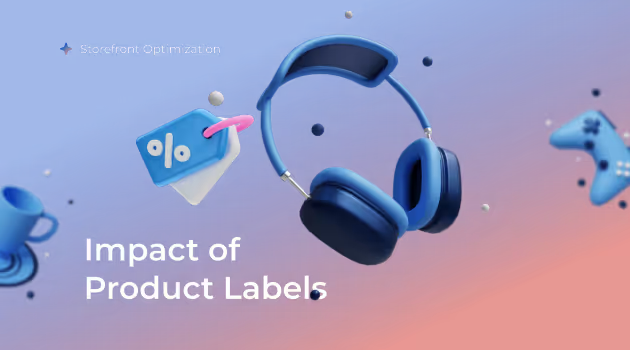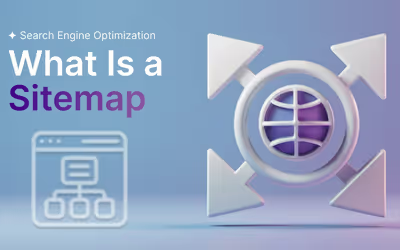In the competitive world of ecommerce , standing out from the crowd is essential for success. One way to grab the attention of online shoppers is through effective product labeling strategies. Product labels play a crucial role in providing essential information about a product, influencing customer purchasing decisions, and ultimately driving sales.
In this article, we will explore the impact of product labels on e-commerce success and uncover strategies to optimize your online store with effective labeling techniques. Whether you're selling clothing, electronics, or beauty products, understanding how to implement compelling and informative labels is key to attracting and engaging customers.
From using clear and concise text to incorporating eye-catching designs and visuals, we will delve into the various elements that make up a successful product label. We will also discuss the importance of highlighting key product features, certifications, and benefits to establish trust and credibility with your target audience.
So, if you're ready to maximize the impact of your product labels and take your ecommerce store to new heights, let's dive in and discover how effective labeling strategies can propel your online business forward.
What is a Product Label?
 A product label in eCommerce helps consumers make informed purchasing decisions by conveying important attributes such as size, weight, and safety warnings. Labels are often placed on product icons to visually assist customers in quickly understanding key information and catching their attention. An effective label not only highlights essential details but also enhances the overall shopping experience by guiding customers toward their choices.
A product label in eCommerce helps consumers make informed purchasing decisions by conveying important attributes such as size, weight, and safety warnings. Labels are often placed on product icons to visually assist customers in quickly understanding key information and catching their attention. An effective label not only highlights essential details but also enhances the overall shopping experience by guiding customers toward their choices.
Importance of product labels in ecommerce
In the fast-paced world of e-commerce, product labels play a crucial role in capturing the attention of online shoppers and driving sales. As customers browse through endless product listings, a well-designed and informative label can be the difference between a customer adding an item to their cart or moving on to the next option.
Product labels serve as the first point of contact between a customer and a product, providing essential information that helps customers make informed purchasing decisions. From highlighting key features and benefits to conveying brand identity and values, effective labeling strategies can significantly impact the overall success of an ecommerce business.
Moreover, in a virtual shopping environment where customers cannot physically interact with products, product labels become even more important in creating a positive and trustworthy impression. By crafting labels that are visually appealing, informative, and aligned with the brand's messaging, ecommerce businesses can differentiate themselves from competitors and build lasting customer loyalty
How product labels influence consumer perception
The impact of product labels on consumer perception cannot be overstated. In the digital age, where customers have a vast array of options at their fingertips, the way a product is presented and labeled can make all the difference in capturing their attention and influencing their purchasing decisions.
Effective product labeling not only conveys essential information about the product but also shapes the customer's overall perception of the brand. A well-designed label that is clear, concise, and visually appealing can instantly communicate the quality, value, and uniqueness of a product, instilling a sense of trust and confidence in the customer.
On the other hand, poorly designed or confusing labels can create a negative impression, leading customers to question the credibility and reliability of the product and the brand. In the highly competitive ecommerce landscape, where customers have a wealth of options, creating a positive and lasting impression through product labeling is crucial for driving sales and building brand loyalty.
The role of product labels in building brand identity
In the ever-evolving world of ecommerce, a strong and consistent brand identity is a powerful asset that can set a business apart from its competitors. Product labels play a vital role in this process, serving as a canvas to showcase a brand's unique personality, values, and visual aesthetic.
By carefully crafting product labels that align with the brand's overall branding and messaging, ecommerce businesses can effectively communicate their brand identity to customers. This can be achieved through the strategic use of colors, typography, imagery, and other design elements that reflect the brand's unique personality and resonate with the target audience.
Moreover, consistent and recognizable product labeling can help to build brand recognition and recall, making it easier for customers to identify and remember a particular product or brand. This, in turn, can lead to increased customer loyalty, as customers become more familiar and comfortable with the brand's offerings.
Key elements of effective product labeling
Crafting effective product labels for an ecommerce store requires a careful balance of various elements, which plays a crucial role in capturing the attention and interest of potential customers. From clear and concise product information to eye-catching visual design, the key elements effective product labeling might include are:
- Key Attributes: Displays important details such as size, weight, and specifications.
(Example: "Size: Medium; Weight: 1.5 lbs; Material: 100% Cotton")
- Usage Instructions: Provides guidance on how to use the product effectively.
(Example: "Formulated for Sensitive Skin. ", "Anti-Aging Formula")
- Safety Warnings: This includes essential safety information to inform consumers.
(Example: "For Indoor Use Only")
- Visual Appeal: Attracts attention with appealing design and branding elements.
(Example: Brands use custom colors and unique fonts.)
- Search Optimization: Incorporates keywords to improve visibility in search results.
(Example: "Organic, eco-friendly")
- Trust Signals: Shows certifications or awards to enhance credibility.
(Example: "Certified Organic, Eco-Friendly Product Award 2024")
- Contact Information: Lists manufacturer details for customer inquiries and support.
(Example: "Manufactured by XYZ Corp")
- Return Policy: Provides information on return or refund policies for transparency.
(Example: "30-day money-back guarantee. Return for a full refund.")
- Social Proof: May include customer ratings or reviews to build trust.
(Example: "Rated 4.8/5 stars by 250+ customers.")
Tips for optimizing your online store with product labels
To maximize the impact of your product labels and drive ecommerce success, consider the following tips for optimizing your online store:
- Prioritize clarity and readability:
Ensure that your product labels are easy to read and understand, with clear and concise text that conveys the most important information.
- Maintain consistency across your product line:
Develop a cohesive labeling system that reinforces your brand identity and creates a visually appealing, recognizable look for your products.
- Highlight unique selling points:
Use your product labels to showcase the unique features, benefits, or selling points that set your products apart from the competition.
- Leverage high-quality labels:
Invest in a professional graphic designer to showcase your items and catalog in the best possible light and capture the attention of potential customers.
- Optimize for mobile:
With the growing prevalence of mobile shopping, ensure that your product labels are designed to be easily readable and engaging on smaller screens.
- Avoid overloading with labels:
Don’t clutter your labels with excessive information or decorative elements; focus on key details to keep the design clean and effective, and avoid applying labels to every category or item.
Using keywords in product labels for SEO
Optimizing your product labels for SEO can be a game-changer. By incorporating relevant keywords into your product labels, you can improve the discoverability of your products and increase the chances of attracting the right customers to your online store.
When selecting keywords for your product labels, focus on terms that are closely related to the product's features, benefits, and target audience. This could include specific product descriptors, industry-relevant terms, or even customer-centric language that reflects how your target audience might search for the product.
Moreover, consider incorporating long-tail keywords or phrases that are more specific and targeted, as these can often have lower competition and higher conversion rates. By strategically placing these keywords within your product titles, descriptions, and other label elements, you can enhance your product's visibility in search engine results and drive more qualified traffic to your ecommerce store.
The psychology of color in product labeling
The strategic use of color in product labeling can have a profound impact on consumer perception and purchasing behavior. Colors possess the power to evoke specific emotions, convey brand personality, and influence the way customers interact with a product.
When designing your product labels, consider the psychological associations and meanings behind different colors. For example, blues and greens are often associated with trustworthiness, stability, and calmness, making them a popular choice for health and wellness products. Reds and oranges, on the other hand, can create a sense of urgency and excitement, making them effective for attention-grabbing sales or promotional labels.
Beyond just the color choices, the contrast and balance of colors on your product labels can also play a significant role in their visual appeal and readability. Ensuring that the text and design elements stand out clearly against the background can enhance the overall impact and effectiveness of your labeling strategy.
Case studies: Successful e-commerce stores with effective labeling strategies
To better understand the impact of effective product labeling on e-commerce success, let's explore a few case studies of successful online stores that have mastered the art of product labeling.
Amazon
Amazon features comprehensive product labels with detailed descriptions, including size, weight, materials, and customer reviews. This straightforward approach helps consumers make informed decisions and reinforces trust in the platform.
Etsy
Etsy emphasizes detailed labels highlighting materials, dimensions, and care instructions. Personalized descriptions and creative photography enhance the uniqueness and storytelling of each handmade or vintage item.
IKEA
IKEA provides practical product labels with dimensions, materials, assembly instructions, and care information. The minimalist design ensures clear, concise details, helping customers make confident purchasing decisions.
Maximizing ecommerce success through effective labeling strategies
In the competitive world of eCommerce, effective product labeling can transform your online store's success. Understanding the role of labels in influencing consumer perception, building brand identity, and driving sales can unlock new growth opportunities. Crafting clear, informative labels that highlight product features, leveraging color psychology, and using strategic keywords can optimize your store and captivate your audience.
With Profstep's Product Labels extension, you can easily enhance your product labeling to stand out and increase visibility. Our solution allows you to add custom labels, create automated label rules, and utilize extensive rule design configuration, displaying labels in multiple locations to maximize impact and drive sales.
Remember, the journey to eCommerce success is an ongoing process. Staying up-to-date with the latest trends, tools, and best practices in product labeling can give you a significant edge in the marketplace. By continually refining and enhancing your labeling strategies, you can create a powerful and lasting impression that resonates with customers and propels your online business to new heights of success.


